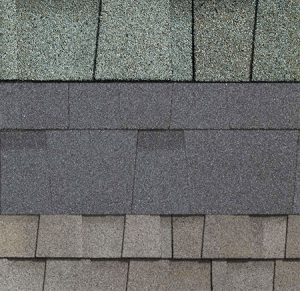
With the ever-increasing focus on more energy efficient building products, it is no surprise that advances in asphalt shingles have kept pace with enhanced solar reflective or “cool asphalt” materials and design.
These advances bring a number of benefits to the homeowner from lower power bills to a longer effective service life. This article will analyze these benefits.
First, let us look at what constitutes energy efficient shingles. These are shingles typically made with specially coated granules that have a higher solar reflectance.
These solar reflective shingles are designed to reflect more of the infrared radiation from the sun resulting in roof surface temperatures 50 – 60 degrees Fahrenheit lower than traditional roof surfaces. The standards used to set the criteria for a shingle to be classified as a “cool roof” product comes from one of two sources – either California Title 24 or by the Federal Energy Star program. The two criteria used for the classification thresholds are solar reflectance and thermal emittance.
Solar reflectance is the measure of the solar energy reflected away from the roof expressed in a ratio between 0 and 1. The higher the value the more energy is reflected. To be Energy Star compliant the solar reflectance of a shingle must have an initial minimum value of 0.25 or a minimum value of 0.15 after being aged. California Title 24 requirements are a little stricter with a higher aged minimum value of 0.20 required.
Thermal emittance is the measurement of the absorbed heat energy radiated away from the surface and is also expressed in a ratio between 0 and 1. One established minimum value to be compliant is 0.75.
Lower power bills
So, with products that meet these criteria what are the benefits to the consumer for cool roofing? The foremost benefit is a reduction in electrical demand that is predicted to be 10 – 30 percent lower during peak demand season. Using the south central part of the United States (a typically hot region during the summer) as an example, if the average power bill is $122/month and assuming about 48 percent of the electricity is used for HVAC, then a 10 – 30 percent reduction would benefit the consumer by saving them $5.85 to $17.55/month during the 6-month period around peak summer, just by using shingles classified as a “cool roof” product. If we assume a 20-year effective life of a shingle, there would be a lifetime benefit between approximately $700 and $2,100 for the electrical efficiency component.
Longer service life
Following closely behind the electrical savings, but also driven by the reduced temperature for a roof, is an increase in the service life of the roof using “cool roof” shingles. With lower overall high-temperature peaks there are less extreme temperature cycles from hot to cold which will reduce long term cracking and fatigue in the asphalt binder. So, with less thermal stress on the binder the shingle will last longer.
Tax savings
And lastly, consumers qualify for a tax credit for Energy Star compliant roofing. The current credit is for 10 percent of the cost of the roof materials (not including installation costs) or a maximum of $500.
It is important to note that these benefits referenced above consider the “cool roof” shingle being used in a hot region for maximum benefit. In cooler climates, the performance boost would be expected to be reduced and even potentially offset by the loss of solar heating during the colder months.
In summary, for most consumers, there are clear advantages to solar reflective or “cool asphalt” shingles with greater benefits for those who live in the hotter regions of the country. Savings in power costs during the summer months with cooler roof temperatures is an immediate benefit. Then a tax credit can be taken for the use of compliant shingles for the year they are installed. And finally, there could be an additional benefit of increasing the service life of the shingle due to less extreme temperature cycles.
So, with these potential benefits, it remains for the consumer to weigh the costs of the newer “cool roof” materials versus the traditional asphalt shingle and determine if the enhanced products make sense for them.
Parker is the Director of Industrial Asphalt Products at Hunt Refining Company.













